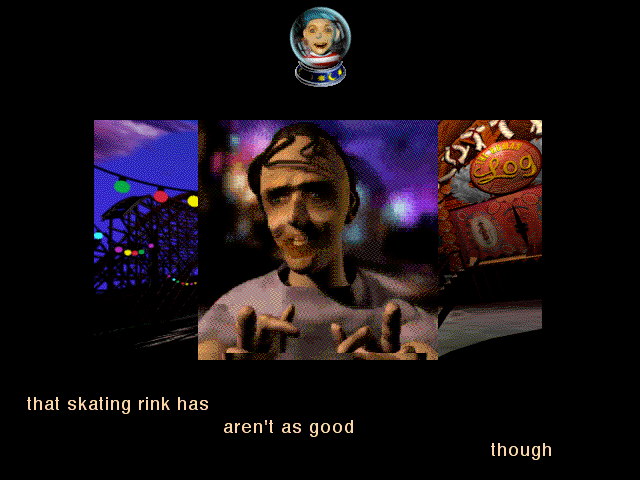Today saw the loss (for real this time) of Hardy Fox, the pioneering artist from The Residents. We look back on the irreverent, surrealist work the band produced and Fox as enigmatic anonymous multimedia ringleader, projecting mystery to the very end.
CDM music writer-at-large David Abravanel offers this obituary.
To borrow a phrase from Mark Twain, the rumors of Hardy Fox’s death have been greatly self-exaggerated. Early this year, Fox posted a “1945-2018” epitaph on his website when revealing the diagnosis of an undefined terminal illness. The epitaph was later taken down. Now, the band and loved ones confirmed Fox passed away earlier today.
“As a child I would always describe my nightmares to my mother by banging on the piano and talking in strange voices.”
Charles Bobuck (aka Hardy Fox), This is for Readers (2016)
For five decades, The Residents chose to remain anonymous. Sure, you could figure things out easily enough – there was The Cryptic Corporation, “representatives” who spoke for the group and whose main mouthpiece, Homer Flynn, sounded an awful lot like the singing/reciting voice on The Residents’ albums (late publicly named as “Randy” and still a recording and touring member). But from mid-1960s inception to the present day, the band officially remains The Residents.
There was freedom in that anonymity – free from the expectation that comes with celebrity and hero worship, The Residents followed their own path. 1979 saw the release of the darkly ambient and creeping Eskimo, while the following year’s Commercial Album consisted of 40 short and digestible songs. In 1976, Third Reich ‘N’ Roll presented an often atonal and satirically repellent take on rock n’ roll classics, while later-career masterpieces like Wormwood (1998) and Voice of Midnight (2007) found a renewed focus on theatrical storytelling.
Anonymity also granted freedom to explore technology. The Residents weren’t stars nor were meant to be – so who was going to stop them from making the next project a film (ill-fated 70s project Vileness Fats), or a point-and-click adventure game (Bad Day on the Midway with artist/designer Jim Ludtke, published in 1995 by Inscape), or, hell, a book based on that video game (2012’s Bad Day on the Midway Reconsidered).
https://www.youtube.com/watch?v=sRlYFI4hhfs
While Randy might have spent the most time in the spotlight (and remains the sole original member in the current incarnation), until 2016 he was joined by co-founder Chuck aka Charles Bobuck aka Hardy Fox. Responsible for the majority of the compositions and musical direction of the Residents, Fox’s music was equal parts Vaudeville, nightmare, future and ancient past. Filled with uncomfortable dissonances and unsettling sounds, but almost always darkly humorous, it seems more than fitting to celebrate Fox (and the perpetually-masked Residents) on the eve of Halloween.
After retiring from The Residents in 2016, Fox published a book, This is for Readers, which details his life story. Certainly, it’s a creative interpretation of the truth, filled with legend but revealing some personal details from Fox’s life: his homosexuality, a strong link between orgasm and music composition, the cast of characters that entered his life as he and his husband settled on a rural chicken farm, stories of going on wild adventures with Randy. It’s ultimately a tender and very human read of an extremely avant garde life, complemented by an original soundtrack of solo material, and available for free on iBooks or via Fox’s website.
“My set-up was computer based. I had programmed what I imaginatively called my “space machine.” I had prerecorded hundreds of two-minute loops and had instantaneous access to them by punching buttons and twiddling knobs. I ran a local area network from an Apple Airport hidden under my table that gave me wireless access to a shitload of noise.”
(about the tour for the Talking Light album)“The idea of working on music without being bothered by people was utopian. Even close friends and neighbors didn’t know what I did for a living. The brief explanation, that I scored gay porn films, usually kept people from wanting to know more.”
And this one is a good commentary on 21st century cities and the Bay Area in particular:
“I had decided some time ago that cities were no place to grow old and I could have orgasms anywhere. I did the civil thing. I bought a farm and became a chicken lord.
Beware of chickens.”
Fox’s 2016 release
There’s no easy way to wrap up an article about Hardy Fox. Between what is known about him (little), what can be inferred (a little more), and what may be creative stretching of the truth (likely lots), he wasn’t exactly transparent. But in the masks, and the animation, and the creative fictions, Fox probed some very unsettling, challenging, and ultimately very human aesthetic worlds.
The sheer overwhelming volume of Residents and Charles Bobuck releases makes it difficult to point to where to start in looking at Fox’s legacy, not to mention Fox’s work is far more often geared toward album rather than cherry-picked “best of” format. That said, I’ve taken a (duck) stab at compiling a friendly introduction to this mad, inspiring world:

